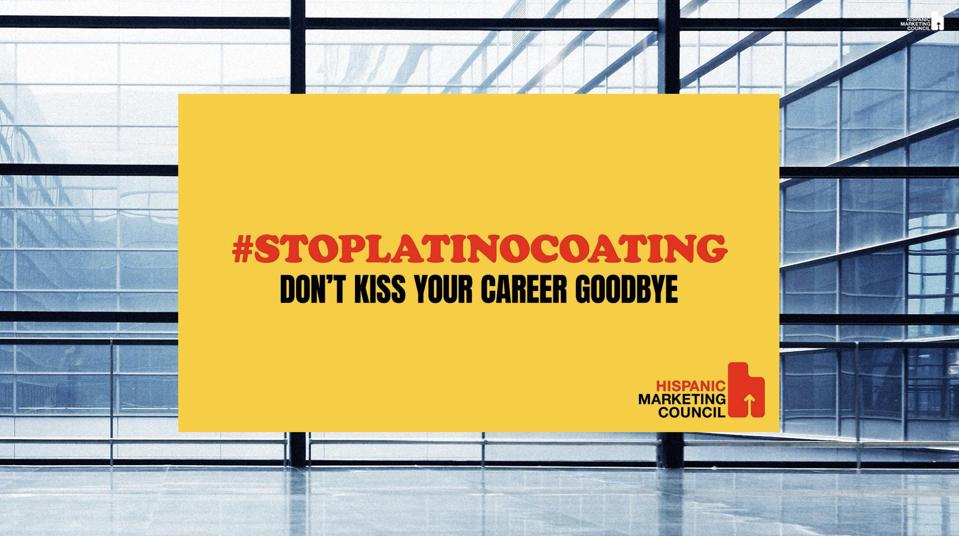In today’s multicultural landscape, the allure of diversity in marketing has never been more apparent. Yet, amidst the vibrant tapestry of cultures, there lies a prevalent issue that often goes unnoticed – Latino Coating. What exactly is Latino Coating, and why is it a cause for concern in the realm of Hispanic marketing?
I caught up with Marco Vega and Luis Miguel Messianu, two esteemed voices in the field of Hispanic marketing and representatives of the Hispanic Marketing Council to delve deeper in the Latino Coating and to discuss the Council’s recently launched #StopLatinoCoating campaign.
Latino Coating can be best described as a superficial marketing strategy that attempts to sprinkle Latino elements onto products, campaigns, or entertainment without a genuine understanding or respect for Latino culture. It’s akin to a thin veneer of diversity, masking a lack of substantive engagement with the community it purports to represent.
Marco Vega, co-founder of leading multicultural marketing agency Creyentes, shared his insight, “Latino Coating is like getting a trophy for a game you didn’t play. It might look cool, but it doesn’t feel right because you didn’t earn it. When brands do Latino Coating, they try to win a trophy without playing the game. They show up to play soccer, and they totally miss the real opportunity to play the beautiful game. They use bits and pieces of our culture without really understanding or showing what it means to us.”
This behavior involves surface-level attempts at diversity and inclusion, such as incorporating stereotypical imagery, language, or cultural elements into marketing campaigns without a deeper connection or meaningful representation.
“Essentially, it is a form of cultural appropriation or exploitation that seeks to capitalize on Latino identity for marketing purposes without genuinely valuing or respecting the culture. It’s like whitewashing, greenwashing, or rainbow washing, but it preys on Latino identity—offering a mere illusion of inclusivity by adding Latino elements on the surface,” Vega added.
Luis Miguel Messianu, a trailblazer in multicultural advertising and Board Member of the Hispanic Marketing Council, echoed this sentiment, “It’s not fair, and it doesn’t make anyone feel good. It can be harmful because it reinforces stereotypes and disrespects the richness and diversity of Latino cultures.”
Retrofitting campaigns by simply translating or adapting campaigns without considering cultural nuances, adding token Latino faces without adjusting the message or context, and depending on stereotypes, are just a few examples of the pitfalls of Latino Coating.
These practices not only lack authenticity but also risk alienating the very audience they seek to attract. Relying on stereotypes instead of understanding and respecting the rich cultural nuances fails to truly connect with Latino audiences because there is no story. “Real stories have heroes, adventures, and magic—not just clichés. Latino Coating dismisses our real stories. Acting like friends with someone just because it’s their birthday month doesn’t make you besties all year. Empty invitations don’t lead to meaningful conversations,” Messianu explained.
Latino Coating is a lazy behavior from marketers who think a superficial coat of paint during Hispanic Heritage Month is enough to make the neighborhood look nice for the whole year. Marco Vega elaborated further, “These behaviors are irresponsible and dangerous for the long-term health of the brands and businesses these marketers are responsible for, as they risk missing out on the Latino community’s 3.2 trillion dollars in purchasing power.” What these marketers miss is that just applying a coat of paint does not improve the value of your home, in this particular case, their brand and much less the neighborhood they want their brands to be a part of.
So, how can brands move away from Latino Coating and toward genuine engagement with the Latino community? The answer lies in cultural understanding, meaningful representation, and forging partnerships with agencies that possess a deep understanding of Latino culture.
Luis Miguel Messianu emphasized the importance of meaningful representation, “Authenticity comes from genuinely representing Latino communities, not just by being visible but by understanding and respecting their values and experiences.”
Respect, understanding, and deeper connections are the cornerstones of authentic engagement. By embracing these principles, brands can cultivate loyalty, trust, and lasting connections within the Latino community.
As Marco Vega aptly put it, “Latino Culture is not a costume your brand wears once a year. It’s a year-long celebration for both brands and our communities to grow together.”
The time has come to #StopLatinoCoating and embrace a new era of authentic engagement in Hispanic marketing. “We already celebrate the few CMOs that are doing it right. There are a few! But unfortunately, the majority don’t. We have just started. Our campaign will get granular, and we’ll showcase both negative and positive cases”, Messianu concluded.

